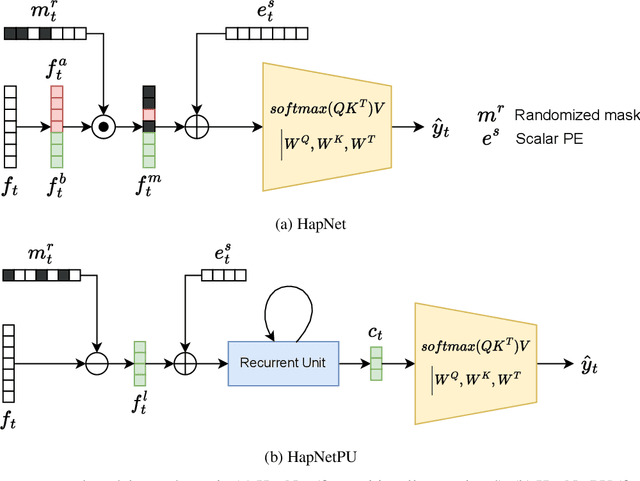Hedging Is Not All You Need: A Simple Baseline for Online Learning Under Haphazard Inputs
Paper and Code
Sep 16, 2024



Handling haphazard streaming data, such as data from edge devices, presents a challenging problem. Over time, the incoming data becomes inconsistent, with missing, faulty, or new inputs reappearing. Therefore, it requires models that are reliable. Recent methods to solve this problem depend on a hedging-based solution and require specialized elements like auxiliary dropouts, forked architectures, and intricate network design. We observed that hedging can be reduced to a special case of weighted residual connection; this motivated us to approximate it with plain self-attention. In this work, we propose HapNet, a simple baseline that is scalable, does not require online backpropagation, and is adaptable to varying input types. All present methods are restricted to scaling with a fixed window; however, we introduce a more complex problem of scaling with a variable window where the data becomes positionally uncorrelated, and cannot be addressed by present methods. We demonstrate that a variant of the proposed approach can work even for this complex scenario. We extensively evaluated the proposed approach on five benchmarks and found competitive performance.
 Add to Chrome
Add to Chrome Add to Firefox
Add to Firefox Add to Edge
Add to Edge